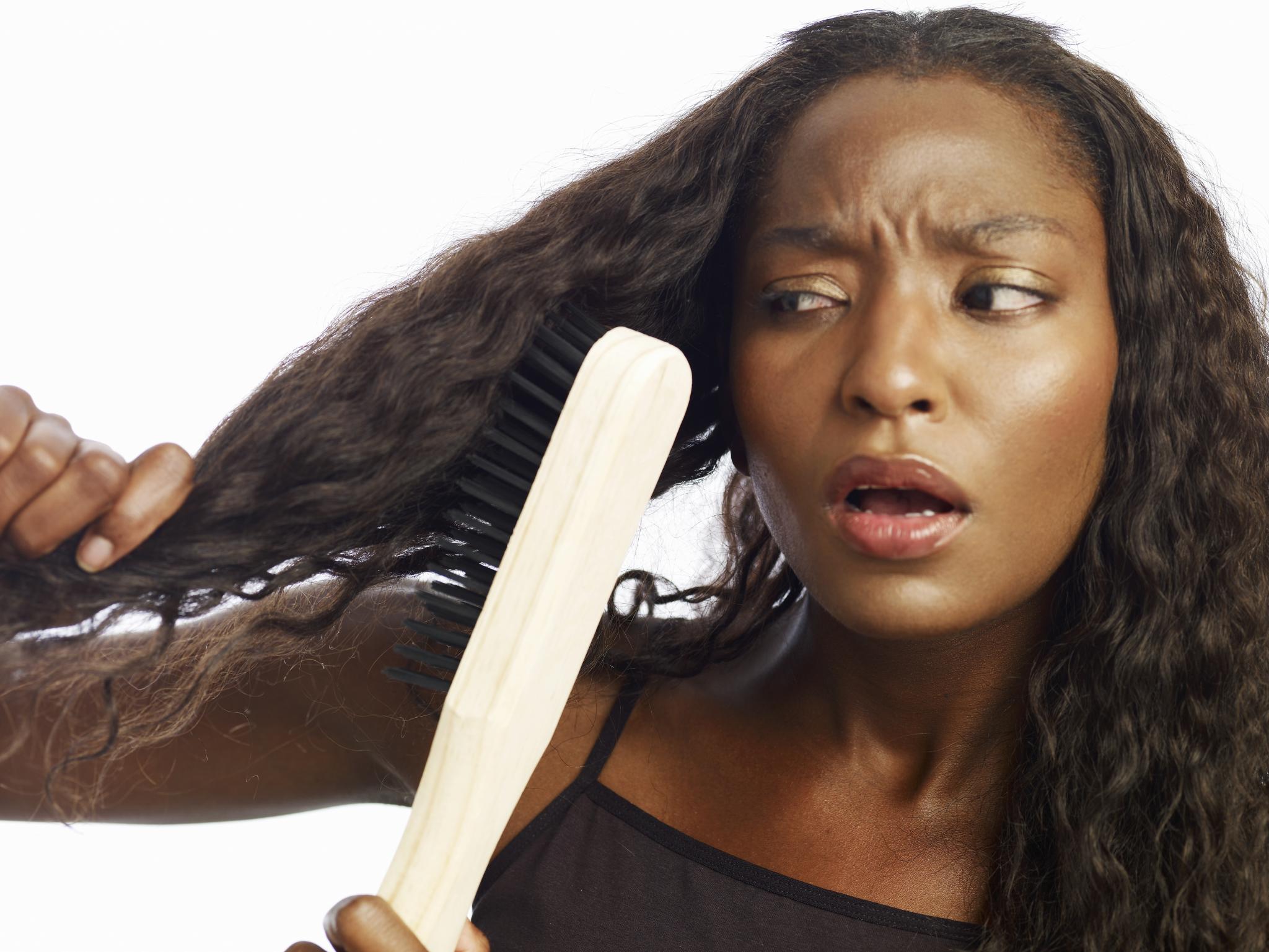
This article was originally published on Travel & Leisure.
Brushing your hair really is an art form, but most people treat it like a boring necessity akin to flossing your teeth or eating high-fiber cereal. At its most basic function, it’s an important step in keeping tangles away and making sure your hairdo looks fly. But it also stimulates your scalp and increases blood flow to the area, which can help maintain a healthy hair and scalp.
Running your fingers through your hair once or twice a day may keep you looking presentable, but if you want a truly healthy, shiny, well-kept mane, there’s a little more to brushing than simply tugging a comb through your hair before you leave house.
Subscribe to our daily newsletter for the latest in hair, beauty, style and celebrity news.
Ahead, a few tips for making sure your hair is in its best shape whether you’re at home or jetsetting around the world.
Take Care when Brushing Wet Hair
Water weakens the hair shaft and hair fibers fill with moisture, which causes them to stretch. While this sounds like a short-cut to getting longer hair, it’s actually the opposite—it causes breakage leading to short ends that won’t smooth down, causing frustrating fly-away hair. “I tell my clients to use a leave in conditioning treatment spray when wet,” said Wendy Gallo Sloan, a hairstylist in New York. “Work that though the hair with a Wet Brush (best) or a wide tooth comb.” Another tip is to angle the comb upward while detangling wet hair to lessen pressure on hair and make it less likely to snap.
Choose the Right Brush
One brush does not fit every type of hair—fine hair needs a different bristle from coarse hair and curly hair and straight hair have completely different requirements. Seek out a brush that works for your hair. Looking for a guide? Real Simple has a breakdown to help choose the best brush for every hair type—a few quick takeaways: look for a boar’s head bristle brush for fine hair and a wide-tooth comb for curly locks.
Don’t Brush From the Top
While it feels efficient to throw your hairbrush at the top of your hair and brush the length of it, take a hint from Drake and start at the bottom. “Start combing at the ends,” said Rafael Pedrosa, a hairstylist in Chicago. “From there, comb slowly from the tips of your hair to the scalp to avoid breakage.” He also suggests that if you run into knots, apply leave-in conditioner and work the knot out carefully from the bottom. Your work is not done, though. “Once tangles are removed, start at the scalp and work down the hair, distributing oils,” said Sloan, who recommends a boar-hair brush or synthetic blend for dry brushing. It sounds like a lot of effort, but Sloan swears it’s worth it. “Since our hair is technically ‘dead’ when it leaves the follicle and everything from water quality to chemical treatments can make it more fragile, we should concentrate on using some effort with the brush instead of ripping through—of which we are all guilty here and there,” she said.
Don’t Brush Too Large a Section
One of the best hair care tips around comes from an unlikely source—Disney princesses. Those animated princesses knew a thing or two about brushing. Aladdin’s Jasmine knew to take a small section of hair in one hand, hold it against her palm, and then run her brush through it. This helps prevent breakage and from pulling too hard and accidentally tugging the hair out from the root.
Don’t Over-Brush
While old movies and magazines from the 1950s recommended that women brush their hair 100 strokes every day, remember that they also added mayonnaise to their Jell-O . The truth is, over-brushing your hair can be damaging to your locks as it can stress the outer-layer of your hair (called the cuticle) and result in dry and dull looking hair. Coloring, bleaching, straightening, and blow drying can do the same thing. Instead of targeting 100 strokes, just brush your hair thoroughly to remove knots and to distribute any naturally occurring oils. Lindsey Bordone, a dermatologist at Columbia University Medical Center in New York suggested brushing once a day to Real Simple.
Don’t Stress About Shedding
While seeing hair in the brush (or in the shower drain) can be alarming, most people have nothing to worry about, according to WebMD. Experts believe we lose up to 100 hairs a day—considering we have 100,000 hair follicles in our scalp, losing a few when we brush is not a cause for alarm. Keep in mind that a hair falls out after two to three months and is quickly replaced, so if you notice significant hair loss, it’s best to talk to your doctor.
Wash With Care
“Washing hair with very hot water accelerates the damage on the outside of the hair strand, called the cuticle,” says Pedrosa. “That leaves hair looking dull and increases split ends. In addition, it also increases the oiliness of the scalp, which can lead to seborrheic dermatitis. The ideal is to use warm or cold water.” Pedrosa also suggests that anyone with an oily scalp should moisturize their hair strands (not scalp) with hair masks and use a volumizing shampoo.
Hair Care Starts on the Inside
Hair is made up of keratin and needs protein, iron, zinc, selenium, and Omega-3 fatty acids to stay healthy. According to WebMD, hair also needs vitamin A, but don’t overdo it—too much Vitamin A can actually cause hair loss. They recommend getting vitamins through what you eat, including spinach and carrots for Vitamin A and Brazil nuts for selenium.
